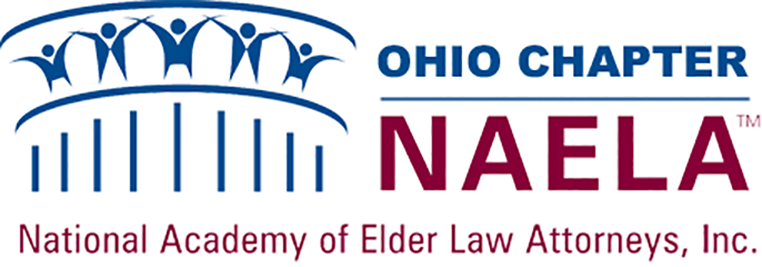ABCNews.com —
Schools across the U.S. are scrambling to find new ways to provide remote instruction to students with disabilities as instruction moves online amid the coronavirus pandemic
BOSTON — At school, Rose Hayes, 8, works with a team of teachers and therapists trained to help with her genetic condition. They set goals for her reading, give her physical therapy to improve her balance and make sure she stays on track. But for the last two weeks, her only connection to school has been through a computer screen.
Rose, home amid the coronavirus pandemic that has shuttered schools across the country, now watches lessons her teacher posts to YouTube. Her therapists check in via video chat. In between, she works through daily assignments.
Her parents say it’s the best they can expect, but they still struggle. Rose has difficulty working on her own, so they need to stay nearby. And without the therapy equipment Rose uses at school, they have to improvise.
“We’re trying to be teachers. We’re trying to be therapists. We’re a little bit of everything right now, and it’s very stressful,” said Rob Hayes, of Woonsocket, Rhode Island. He and his wife work for pharmaceutical companies and have continued working during the pandemic, trading turns staying home with Rose and their 2-year-old daughter.
Maintaining education for students with disabilities
Across the U.S., schools and families face new challenges in maintaining instruction for students with disabilities. Teachers are exploring new ways to deliver customized lessons from afar. And while parents of all children have taken on schooling duties, those whose children have disabilities are adding therapy, hands-on lessons and behavioral management to the list.
Last year, nearly 7 million U.S. students ages 3 to 18 received special education services, according to federal data. Schools are required to craft individual education plans for each one: For some, it’s mostly a matter of providing extra time on assignments; others need an array of complex services, and some have lost access to expensive technology they use at school to help them communicate.
As they adapt to shutdowns, some schools are turning to video conferencing to provide lessons and therapy sessions, while others are bringing small groups of students back for services or training parents to help.
Some, though, have hesitated to move special education online. As virtual instruction began unrolling, the U.S. Education Department issued a reminder that students with disabilities must be granted the same opportunities as other students. It led some districts, including Philadelphia’s public schools, to forgo online instruction entirely, citing concerns about their ability to serve all children.
Education Secretary Betsy DeVos blasted that approach, saying schools have a duty to serve their students. She urged schools to use online platforms or, if that isn’t possible, low-tech alternatives like work packets or written assignments.
“It was extremely disappointing to hear that some school districts were using information from the Department of Education as an excuse not to educate kids,” DeVos said in a March 23 statement. “This is a time for creativity and an opportunity to pursue as much flexibility as possible so that learning continues.”
Many districts say it’s inevitable that families of students with disabilities would have to help. Some are asking parents to guide students through daily lessons or administer tests measuring their children’s progress, a key component of special education laws.
Officials in South Carolina’s largest district said they know it’s a tough ask, and they’re asking families to set realistic expectations.
“We can’t replicate the general education curriculum in the home, so we’re not trying to replicate the special education program either,” said Traci Hogan, Greenville’s assistant superintendent for special education services. “It’s not perfect on our end, and we don’t expect it to be perfect on their end.”
Advocates say it’s crucial that students with disabilities continue to receive instruction during closures. Research has found that breaks in schooling — even for a day or two — can erode ground on skills students were starting to master. But keeping them engaged from afar will be a challenge, schools say, especially for those with severe disabilities.
A rescue package approved by Congress aims to help by providing $13.5 billion that schools could use to buy computers and technology for students with disabilities. But it also asks DeVos to consider whether the government should temporarily waive requirements around the instruction of students with disabilities, a move disability advocates strongly oppose.
Amid rapid change, some parents of students with disabilities say they already feel left out.
Darlene Gildersleeve, of Hopkinton, New Hampshire, has a 14-year-old daughter whose education plan includes counseling, occupational therapy, speech therapy and specialized instruction. Her school is offering to arrange some of that by phone and Google Classroom, but Gildersleeve hasn’t heard anything about speech therapy or support for math, English and reading.
“I have no idea how to get on Google Classroom,” Gildersleeve said. “That’s a big concern of mine — will I be able to step in and help her?”
Some districts say it will be hard to avoid learning setbacks, especially in skills that are tougher to teach from afar. Honing social skills amid social distancing mandates, for example, has already proved challenging.
Rose Hayes’ teacher tried to gather the class for a video conference, but some families didn’t have the required technology, her father said. Elsewhere, teachers are using interactive video games to keep students connected, said Kelly Grillo, a special education coordinator for Cooperative School Services, an organization that works with nine school districts in Indiana.
But Grillo said some problems remain unsolved. She’s currently grappling with how to help students who use costly Braille machines at school but don’t have access to them at home.
“There are lots of barriers, but we can find lots of ways to work around them,” said Grillo, of Lafayette, Indiana. “Our field has never felt the urgency that it feels right now.”
Roslyn Holcomb, a social worker in Dunwoody, Georgia, worries that her son Kell, 8, isn’t learning at the same pace he was in the classroom. His school posts daily video lessons, and his teacher calls every day to go over assignments he found difficult. But Kell, who has autism, ADHD and a language processing disorder, needs his mother’s help to stay focused.
Holcomb shifted her schedule to work nights so she can spend her days helping him. She appreciates what the school has done, but wonders how much longer the arrangement can last.
“It’s labor intensive. It really is,” she said. “This is not something that we’ll be able to do for months.”
———
Associated Press writer Holly Ramer contributed to this story from Concord, New Hampshire.
…
…

